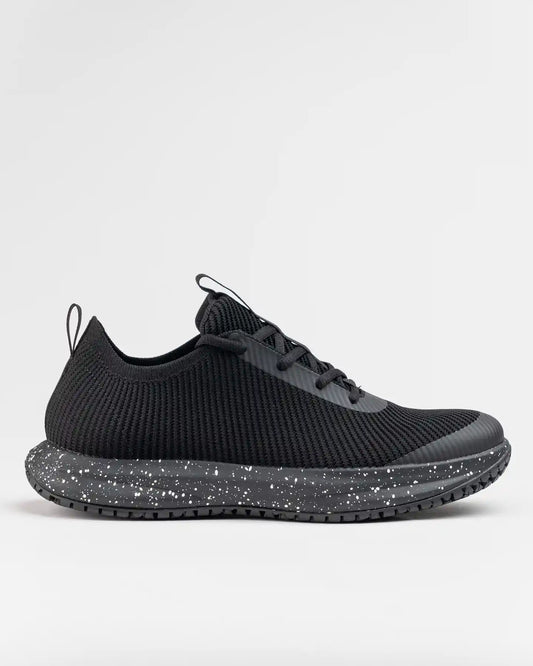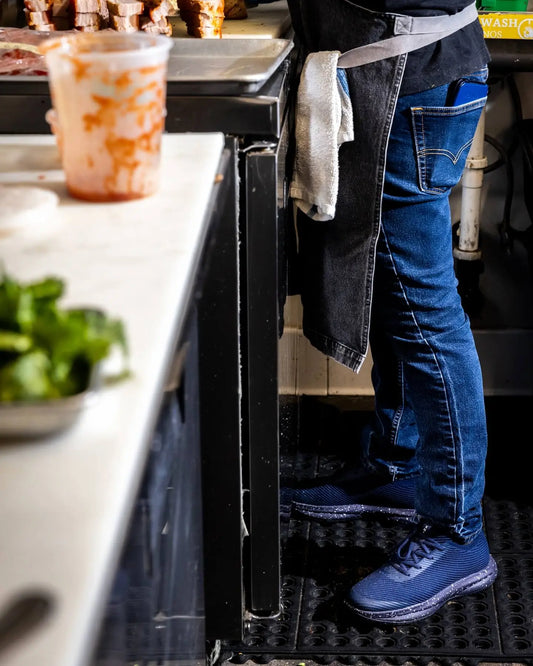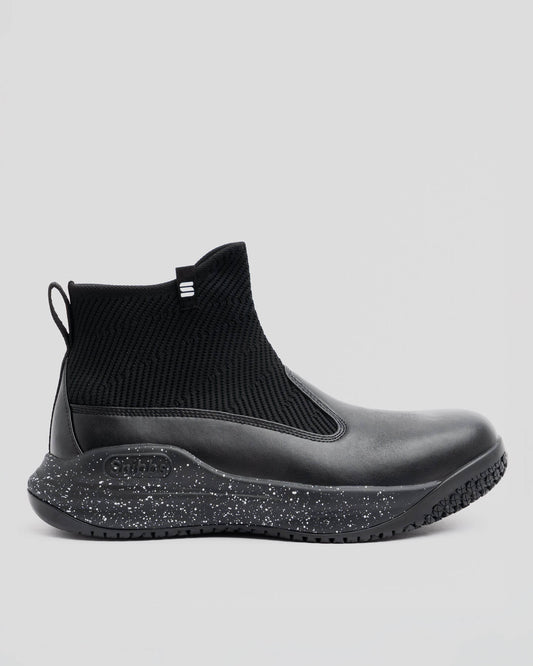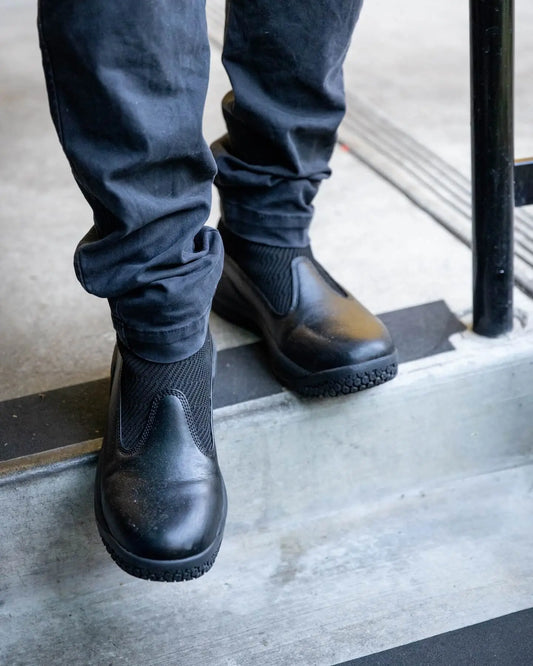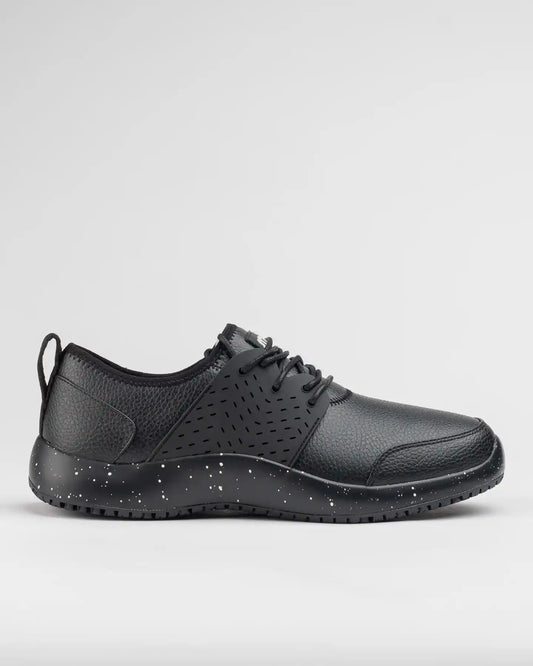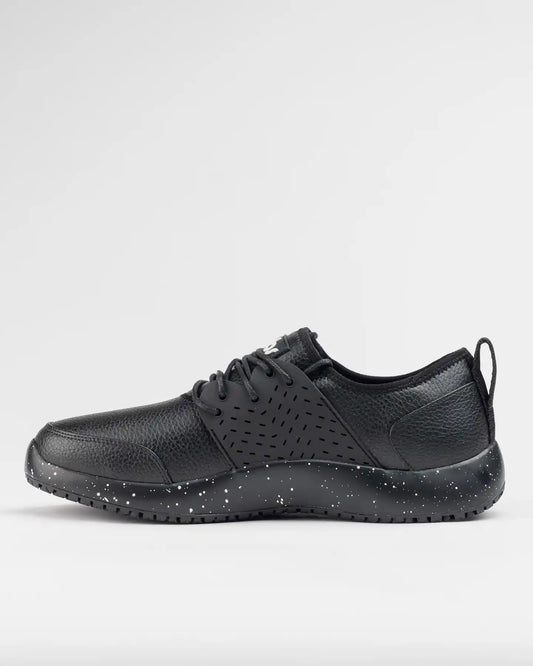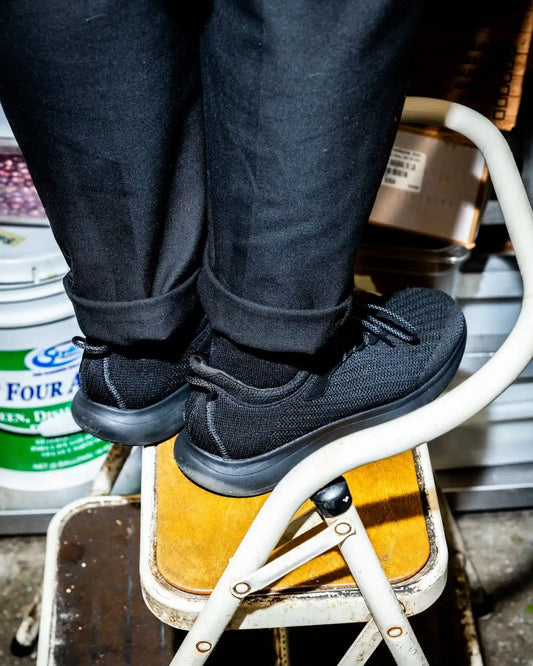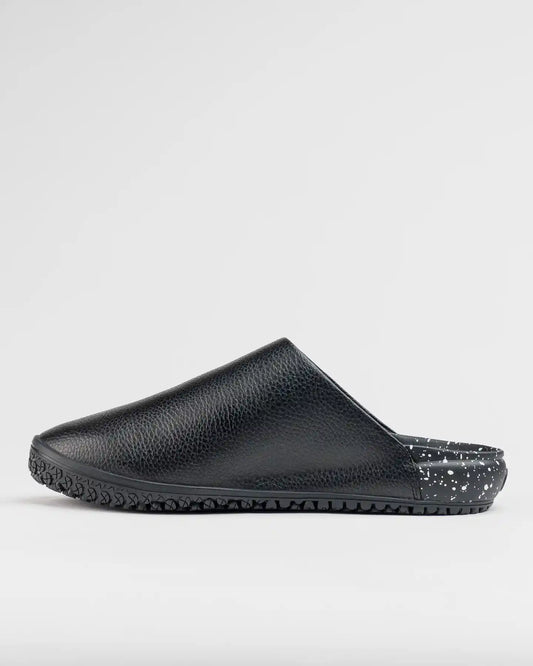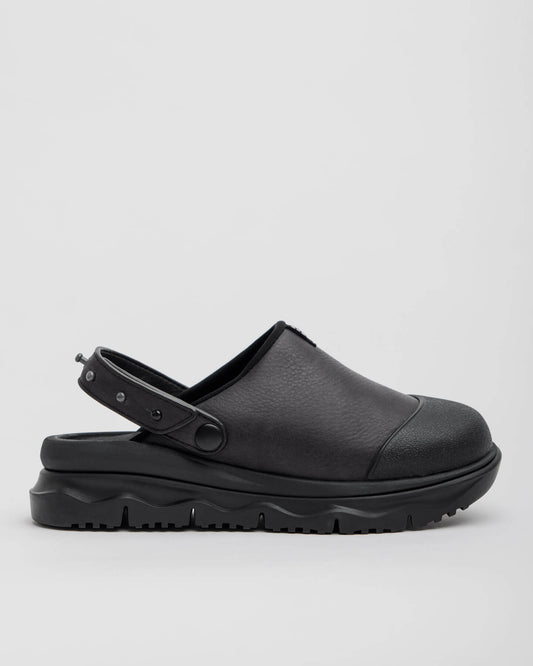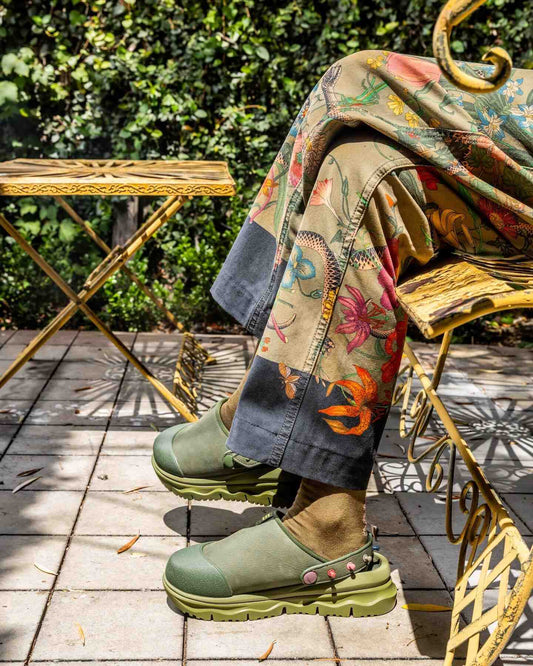Foot Comfort and Safety at Work
Snibbs Footwear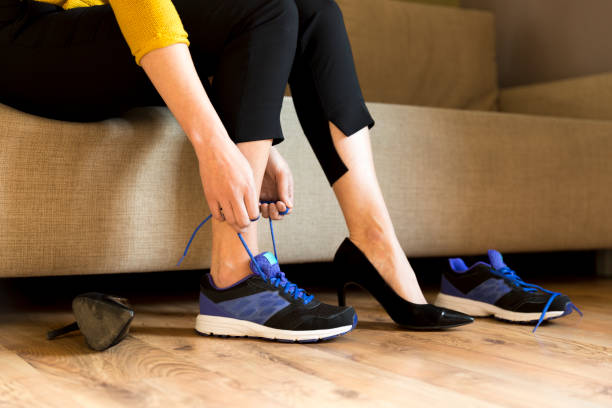
What are the major types of work-related foot injuries?
When it comes to foot pain and injuries at work, there is a wide spectrum ranging from fatigue from being on one’s feet for long hours to debilitating injuries caused by accidents. Injuries, in turn, can broadly be a function of a) cuts, punctures, and sprains and b) those arising from slips, trips, and falls.
What are the two common causes of work-related foot injuries?
Inappropriate flooring, and inappropriate footwear remain the two common causes of work-related foot injuries.
How does flooring cause foot injury?
First, a hard floor impacts worker comfort. Having to walk on hard concrete floors for long periods of time can lead to sore feet, swollen legs, pain in the knees and the back. Increasingly, people suffer from Plantar Fasciitis, which is an inflammation of the tissues at the bottom of the foot. It is known to become worse when the foot pronates on hard surfaces.
In addition, if the floor is slippery, workers can experience slips and falls that can result in major injury.
What role does footwear have to play in foot problems?
Footwear that does not fit properly or fails to provide adequate support, contributes significantly to foot problems. If the footwear does not have a supportive insole, for example, it can add to fatigue. Similarly, if the toe box isn’t wide, it doesn’t provide room for natural swelling that happens over long periods of standing.
What are some of the measures that can be taken with regard to the flooring to improve foot safety and comfort?
It is important to provide some kind of cushioning to the feet as opposed to workers working on a hard floor. Carpets and anti-fatigue mats work well. Similarly, anti-slip flooring can also go a long way in preventing slips and falls. What is important though, is the right installation in each of these cases, so that any tripping and slipping accidents can be avoided.
What are some of the other measures that can be taken in the workplace for foot safety?
Protective equipment as well as some basic caution in work places can go a long way in ensuring foot safety. Some of these include:
- Installing safety mirrors and warning signs
- Effective cleaning that ensures that there are no spills or clutter in the walkways
- Proper lighting that can prevent accidents
- Proper guarding of machines to avoid accidents
What are some aspects to look for in buying footwear for work?
Good footwear should have the following qualities:
- It should allow for sufficient toe room to account for the swelling that comes from standing for long hours.
- An ergonomically designed midsole can provide relief to various parts of the foot.
- A slip-resistant outsole will come in handy in avoiding slips and falls.
- A deep heel cup can stabilize the foot by aligning your feet with the knee, hips, and ankles. The foot alignment will limit pronation and help reduce pain in the feet and back.
- In addition, the selection of footwear needs to be made to suit the specific working conditions. If you work in cold conditions, for example, insulated footwear is beneficial. Similarly, if you work in a set up where there are sharp, flying objects, foot safety demands that you arm yourself with safety shoes that can protect you from debilitating injuries.
- Attention should be given to the fact that the safety shoes aren’t bulky and do not restrict movement.
With these seemingly simple tips, foot safety can be greatly enhanced.
